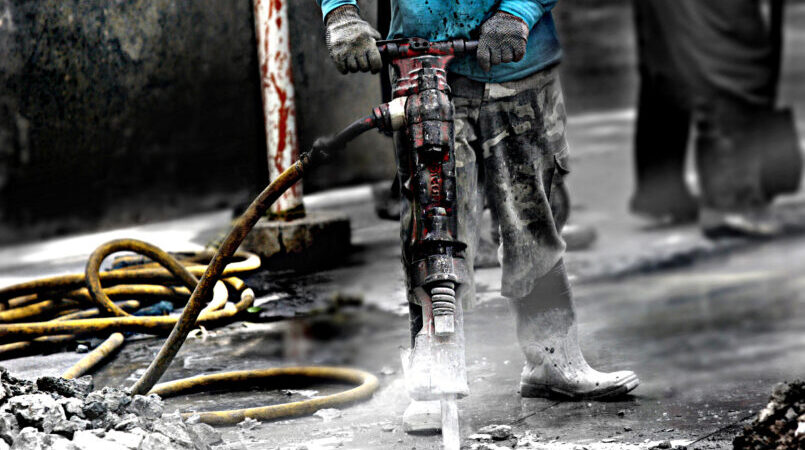If you’ve ever ridden your bike over rough gravel or traveled in an old truck without proper shocks, you’ll understand the old phrase “teeth rattling around in your head.” It’s not an experience that anyone can enjoy for long!
Those same sensations are part of why newer, smoother rollercoasters are more enjoyable than the rough, wooden ones. But, what happens when that 2-minute rough ride becomes a 40-hour work week on a fork truck from 20 years ago? Simply put, you’ll be hurting later on.
Prolonged exposure to Whole-Body Vibration (WBV) creates a higher risk for developing physical discomfort and other issues.
Experiences like riding an old rollercoaster or biking over gravel are examples of Whole-Body Vibration (WBV), which is defined by the International Organization for Standardization as “vibration transmitted via the buttocks or back in the case of sedentary work or via the feet in the case of standing work.”
Imagine if you had to endure that constant rattling all day for work!
Prolonged exposure, such as that from working a full day on an old or poorly maintained fork truck can lead to multiple physical side effects (ISO2631), such as:
- Reduced performance
- Impaired fine motor skills
- Impaired perception—which can lead to a balance disorder
- Stomach/Digestion issues
- Death (in extreme cases)
Some work tasks require the use of tools that involve Hand-Arm Vibration (HAV), which has its own physical side effects.
Unfortunately, WBV isn’t the only form of vibration that an employee might experience at work. He/She/They might also be exposed to a more directed form of vibration called Hand-Arm Vibration (HAV), which is transmitted via the hands and affects only, or mainly, the hand-arm system (ISO5349). Think of tasks like using a jackhammer or a drill for multiple hours a day.
Similar to WBV, prolonged exposure to the more targeted vibration can lead to physical side effects such as:
- Circulation disorders (i.e., Vibration White Finger or Vibration-induced Vasospastic Syndrome)
- Nerve function disorders (i.e., Hand-Arm Vibrations Syndrome)
- Muscular tissue changes
- Bone and joint damage (i.e., lunate necrosis or fatigue fractures)
All these potential side effects can be alarming, and should be taken seriously by all working adults, but especially by Health and Safety Professionals tasked with protecting their fellow employees.
Luckily, the National Institute for Occupational Safety and Health (NIOSH) has an entire database of tools related to evaluating and correcting vibration exposure. The Exposure Points System charts used to calculate action and exposure limits for different situations are easily found online from published resources to assist in evaluating and managing employee exposure.
Keep your equipment up to date and in good condition to keep employees safe.
It’s as simple as that. Replacing old equipment with new, low-vibration tools and improving maintenance techniques and schedules will go a long way in reducing your employees’ exposure to WBV and HAV.
With a little bit of focused effort, we can all protect ourselves and colleagues from extreme vibration exposure and the health risks that accompany it.
